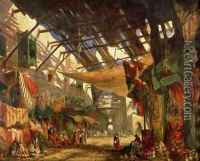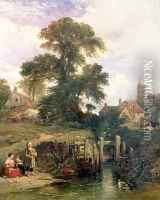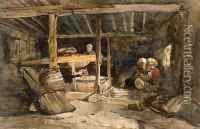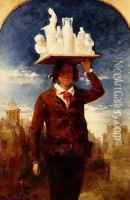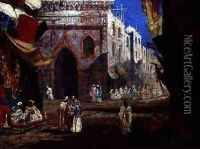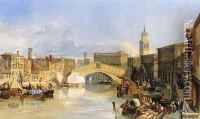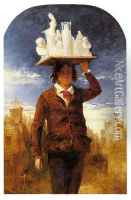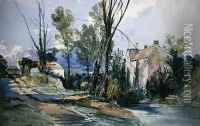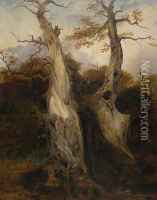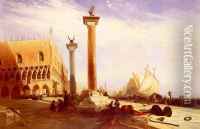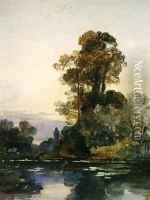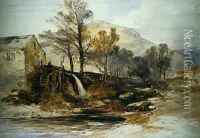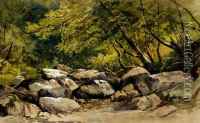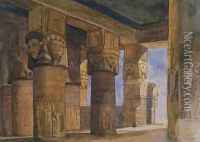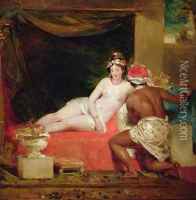William James Muller Paintings
William James Müller was an English landscape and genre painter, noted for his works in watercolor. Born on June 28, 1812, in Bristol, England, Müller was the son of a Prussian consul and amateur artist, which enabled him to receive early artistic training. He showed a strong penchant for art from a young age and was encouraged to pursue his interest.
Müller began his formal art education at the Bristol School of Art, where he was influenced by the work of local artists. In 1833, he moved to London, where he furthered his studies and was inspired by the works of great masters at the National Gallery. He also joined the Sketching Society, which gave him the opportunity to meet other artists and refine his skills.
In 1834, Müller traveled to the Middle East, visiting Greece, Egypt, and Turkey. This journey had a profound impact on his artistic style and subject matter. He produced numerous sketches and watercolors that captured the landscapes and people of the regions he visited. His works from this period were praised for their vibrant color and light, which set them apart from the more traditional European landscape paintings of the time.
Although Müller was primarily known for his watercolor landscapes, he also worked in oils and was proficient in illustrating genre scenes and historical subjects. His versatility in different media was well regarded by his contemporaries. He exhibited his works at the Royal Academy and the British Institution, among other venues, and gained a respectable reputation during his lifetime.
Tragically, Müller's career was cut short when he died young, on September 8, 1845, in Bristol. Despite his relatively brief career, he left behind a significant body of work that continues to be appreciated for its originality and contribution to the development of British watercolor painting in the 19th century. His works are held in several important collections, including the British Museum and the Victoria and Albert Museum in London.
